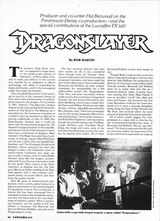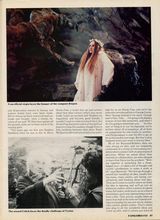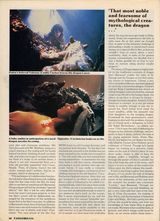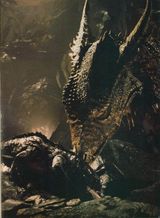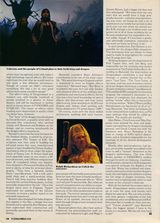The greatest thing about movies – as opposed to stage plays, or the small-screen dramas of television – is film’s ability to lie, and to make you believe. In the current era, marked by an explosion in effects technology, this ability is expanding by leaps and bounds, and it’s the moviegoing public that reaps the benefits.
One very good illustration of this principal in practice is the cinematic history of that most noble and fearsome of mythological creatures, the dragon. On its release in 1941, Disney’s The Reluctant Dragon (based on the story by Kenneth Grahame, author of The Wind in The Willows) set a precedent for the humorous treatment of a subject that just seemed too difficult to portray realistically on film. In 1958, Ray Harryhausen showed that it could be done, with his stop-motion dragon for The Seventh Voyage of Sinbad. In the early 60s, perhaps as a result of Harryhausen's work, there was a mini-boom in dragons – Bert Gordon’s The Magic Sword pit Gary Lock wood, as George, against Basil Rathbone and his pet, a fairly nifty two-headed fire-breather, and The Wonderful World of the Brothers Grimm featured the best film dragon to date-Jim Danforth’s work, in breath-taking Cinerama – but again put into a comic context, with co-stars Buddy Hackett (who kills the dragon, accidentally) and Terry-Thomas (who takes credit for the deed). More typical of the filmic treatment of dragons was the The Dragon’s Blood, an Italian retelling of the Seigfreid legend, with a title creature composed mostly of sound effects and what looks like papier mache.
After 80 years of motion-picture production, that’s a pretty paltry history for a figure so prominent in the world of legend. It’s gratifying to know that, at long last, a feature film has been conceived that is intended to restore the formidable reputation that, this beast had at the very beginnings of western culture. What is surprising, however, are the credits of the men behind it – producer Hal Barwood and director Matthew Robbins, who also wrote Dragonslayer's script.
[…]
